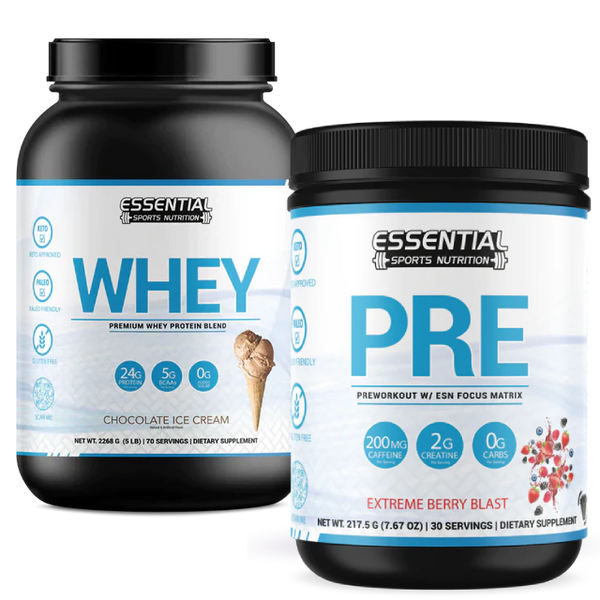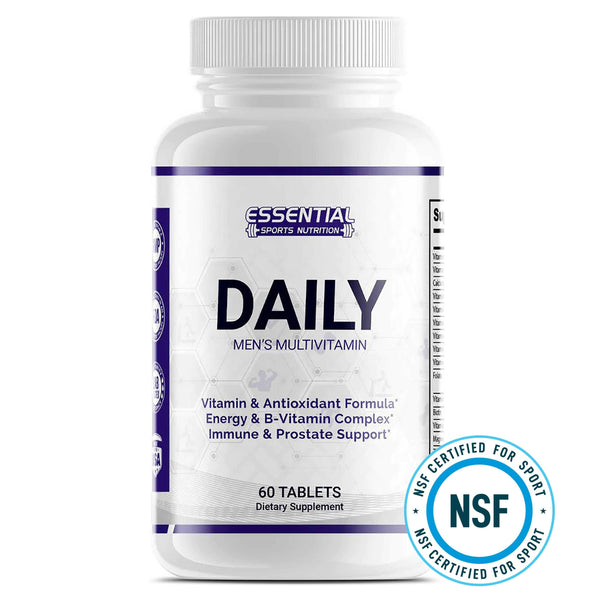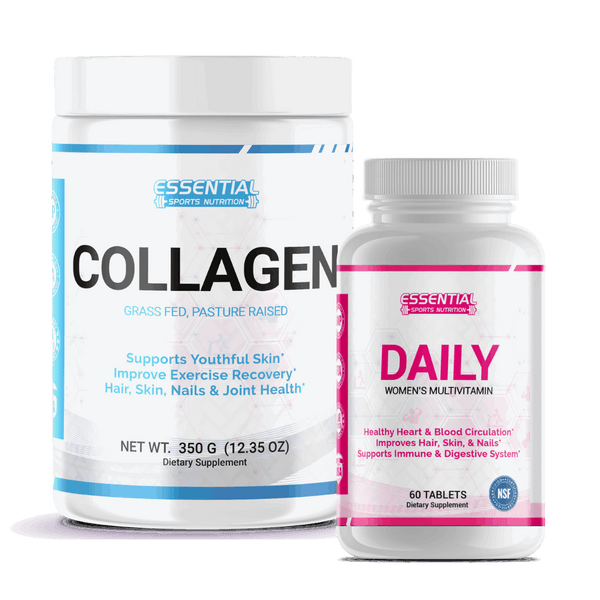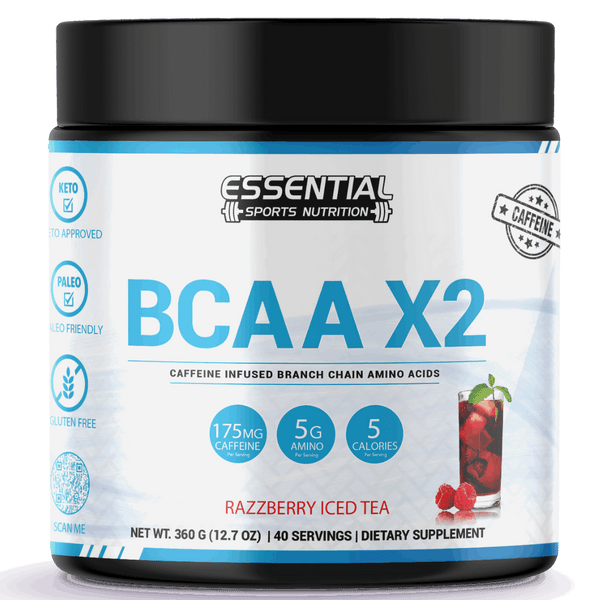The Best Chest Workout for Mass
Building a brawny, broad chest is a goal that's both challenging and rewarding, and it's a journey you're likely eager to embark on. As you step into the realm of resistance training, you'll find that certain exercises stand out for their efficacy in adding mass to your pectoral muscles. You've probably heard of the classic bench press, but that's just the tip of the iceberg. It's essential to understand not just what exercises to perform, but how to execute them with precision to maximize muscle engagement and growth. Let's explore the principles that will guide you toward a chest that not only looks powerful but is a testament to your dedication and hard work. Stick with me, and you'll uncover the strategies to transform your chest workouts from mundane to monumental, ensuring that each session brings you one step closer to the impressive upper body you're striving for.

Key Takeaways
-
Pectoralis major is responsible for the bulk of chest mass and power.
-
Progressive overload is key to continuous growth and strength gains.
-
Proper setup and form are crucial for bench presses and dumbbell bench presses.
-
Variety is key to breaking plateaus and achieving greater gains.
Understanding Chest Anatomy

While you're eager to pack on chest mass, it's crucial to grasp the anatomy of your chest muscles to maximize your workouts and sculpt a powerful, symmetrical upper body. The pectoralis major, your pec major, is the powerhouse behind that impressive chest you're after. It's responsible for the bulk of your chest's mass and power. Underneath lies the pectoralis minor, a key player in stabilizing your shoulders and complementing the pec major.
You must understand this anatomy to effectively target your chest with precision. Chest training is not a one-size-fits-all; it's about stimulating all muscle fibers across the upper, middle, and lower portions. Incline presses will hit those hard-to-reach upper chest muscles, while flat bench movements engage the substantial middle section, and decline presses carve out the lower chest.
To build a bigger chest, your chest-building programs should incorporate a balanced training volume that challenges each part of these muscles. Remember, muscle building is about more than just lifting weights; it's about stimulating growth through a variety of exercises that ensure comprehensive muscle stimulation. So, as you embark on your journey, keep these anatomical insights in mind to truly transform your chest.
Essential Chest Exercise Principles

To pack on chest mass, you'll need to adhere to the principle of progressive overload, consistently upping the ante to outdo your last performance. It's not just about lifting heavier; you must also nail the fundamentals of exercise form to prevent injury and ensure each rep counts. Embrace these principles, and you're setting the stage for solid gains and a chest that's not just strong, but sculpted.
Progressive Overload Technique
In the quest for a more formidable chest, progressively overloading your muscles is key to unlocking continuous growth and strength gains. The progressive overload technique isn't just a buzzword; it's your roadmap to building muscle that commands attention. You've got to challenge your chest with heavier weights, increase your rep range, or add more sets. This constant tension forces adaptation, pushing you toward your bench press max and beyond.
| Progressive Technique | How to Apply |
|---|---|
| Increase Weight | Gradually add more weight to your lifts to keep the muscles challenged. |
| More Reps | Aim to increase the number of reps within your target rep range. |
| Additional Sets | Introduce more sets to amplify the workout intensity. |
| Compound Movements | Focus on multi-joint exercises like bench presses for maximal muscle recruitment. |
Stay consistent, keep pushing your limits, and watch as your chest transforms into a powerhouse of strength and mass.
Exercise Form Fundamentals
Mastering the essentials of exercise form is critical; you'll prevent injuries and ensure your chest muscles are fully engaged for maximum growth. For movements like the bench press and dumbbell bench press, proper setup is non-negotiable. Position yourself with your feet planted firmly, creating a stable base for your full body. Keep your shoulder blades squeezed together to protect your upper back and enhance pressing strength. This not only supports muscle development but also contributes to increasing chest size effectively.
Embrace every pressing variation with a focus on a full range of motion. This principle is central to a compound set where multiple joints and muscles work in unison. Remember, consistency in maintaining impeccable form will be the cornerstone of your chest-building journey.
Mastering the Barbell Bench Press
Achieving a powerful chest starts with perfecting your form on the barbell bench press, ensuring your upper back remains stable, you maintain a slight arch, and your shoulder blades are retracted throughout the lift. This foundational exercise is key to developing chest strength and adding mass to your upper body. When you train the chest with the barbell bench press, you're engaging a large muscle group that responds well to the right amount of stress and recovery.
To further challenge your pectorals, mix in both flat and incline pressing movements. The incline barbell bench press, in particular, hones in on your upper chest, carving out that sought-after definition. Remember, consistency and progressive overload are your allies in the quest to build muscle.
Don't just stop at bench pressing; incorporate variations like the floor press to minimize shoulder strain and the dumbbell bench press to improve unilateral strength. And for a well-rounded chest routine, add dips into your regimen to target the lower chest. Every rep, every set, takes you closer to the chest gains you're after. Stick with it, and the mass will follow.
Perfecting Dumbbell Press Variations
While you continue to press for progress with the barbell, don't overlook the benefits of dumbbell press variations for maximizing chest development. These exercises are not just about hoisting weights; they're about perfecting a craft. Each dumbbell variation you tackle is an opportunity to enhance your strength and muscle gains. To get started, grab a pair of dumbbells and hit the dumbbell bench.
First, you need to prime your body for success. Keep your shoulders retracted and establish a strong base with your upper back pressed against the bench. This isn't just about safety; it's about activating the right muscles. As you press recruits from your chest, shoulders, and triceps, controlling the range of motion is crucial. Bring the dumbbells down slowly and press them up powerfully, pressing them together at the top for that peak contraction.
Don't be afraid to adjust the angle of the bench. Whether it's an incline press for the upper chest or a decline variation for the lower pecs, find your comfortable angle. Remember, dumbbell presses are a great spotter-free alternative to barbell work. Keep pushing, keep pressing, and the gains will follow.
Incorporating Incline and Decline Presses
You've got the basics down, now it's time to elevate your chest routine with incline and decline presses. Mastering these angles ensures you're hitting every fiber of your pecs, leading to impressive mass and definition. Stay focused on your technique, and you'll see the payoff in strength and symmetry across your chest.
Benefits of Angle Variation
Incorporating angle variations into your chest routine, such as incline and decline presses, targets distinct pectoral regions, leading to more comprehensive muscle development and a sculpted chest. The incline bench press zeros in on your upper chest and triceps, emphasizing the pec minor for that coveted clavicular definition. Conversely, the decline bench press shifts the focus to your lower pecs, enhancing the mass and definition of different parts of your chest muscle.
-
Incline Presses: Target the upper chest, improving the overall chest and triceps development.
-
Decline Presses: Emphasize the pecs' lower region for a fuller, more defined look.
-
Fly Variations: Incorporate angle variation to stimulate the pec muscle from multiple angles for balanced growth.
Stay motivated and watch as each angle variation carves out the chest you're aiming for!
Technique for Optimal Growth
Understanding the benefits of angle variation sets the stage for mastering the techniques that will drive your chest growth to new heights, especially when executing incline and decline presses with meticulous form. To Train Your Chest effectively, you'll need to push with precision, keeping time under tension a priority. Dumbbell presses offer an ideal approach, allowing for continuous tension throughout the movement.
| Exercise | Benefit | Technique Tip |
|---|---|---|
| Incline Press | Targets upper chest | Keep elbows slightly tucked |
| Decline Press | Emphasizes lower chest | Don't let hips rise |
| Flat Dumbbell Press | Overall chest development | Use a full range of motion |
| Incline Dumbbell Fly | Stretches upper chest | Control the descent |
| Decline Cable Fly | Isolates lower chest | Maintain a slight bend in elbows |
Chest Exercises to Build mass need serious fuel, and your technique for optimal growth is that fuel. Stay motivated, and precise, and embrace the burn.
Utilizing Push-Ups for Pectoral Development
Push-ups, when executed with proper form, can serve as a cornerstone for building impressive chest mass, effectively engaging your pectoral muscles through a range of challenging variations. When you're training your chest, incorporating push-ups is a great move. They're not only a stellar exercise for pectoral development, but they also enhance overall size and strength without the joint stress that weights can sometimes inflict.
If you're looking to build the best chest possible, don't underestimate the power of push-ups as both a primary workout and a secondary lift. By using different hand positions and elevations, you can introduce a new stimulus to your muscles, ensuring continuous growth and improvement. Remember, variety is key to breaking plateaus and achieving greater gains.
-
Wide Grip Push-Ups: Target the outer chest for a broader look.
-
Diamond Push-Ups: Focus on the inner chest and triceps for detailed development.
-
Decline Push-Ups: Elevate your feet to hit the upper pectorals, sculpting that sought-after shelf-like appearance.
Don't just go through the motions; challenge yourself with these push-up variations to ensure your chest exercises for mass are as effective as they can be. Stay consistent, and watch your chest transform.
Exploring Chest Fly Techniques
While push-ups effectively build chest mass, exploring chest fly techniques will further isolate and sculpt your pectoral muscles with precision. When it comes to fly variations, each offers a distinct stimulus on chest fibers, engaging them through shoulder adduction without the triceps assistance that pressing movements entail.
Take the Dumbbell Flye, for example; it provides more control than pressing movements, allowing you to focus on the stretch and contraction of the chest muscles. Varying your angle toward the incline will target the upper chest, while a decline focuses on the lower regions.
Utilize a different rep scheme and tempo to challenge your chest further. By incorporating flies into your regimen, you'll notice a significant improvement in the depth and definition of your pectoral muscles.
Here's a quick guide to help you visualize the impact of various chest fly techniques:
| Chest Fly Variation | Targeted Chest Area |
|---|---|
| Flat Dumbbell Flye | Overall pectorals |
| Incline Flye | Upper chest |
| Decline Flye | Lower chest |
| Cable Fly (aka pulling the band) | Mid to outer chest |
| Machine Fly | Focused inner chest |
Integrating Advanced Chest Workouts
To elevate your chest training, integrate advanced exercises like plyometric push-ups and single-arm dumbbell presses, pushing your muscles beyond their comfort zones and sparking significant growth. When you're ready to take things up a notch, consider these powerful techniques:
-
Heavy Exercise: Focus on heavy progressive overload with exercises like the bench press and floor press. Aim for the 3-8 rep range, but always maintain perfect form.
-
Volume Per Workout: Increase the volume per workout strategically. More sets and reps mean more growth, but balance is key to preventing overtraining.
-
Post-Workout Protein: Never underestimate the power of post-workout protein. It's crucial for recovery and building the mass you're working so hard for.
Remember, these advanced methods are not just about lifting heavier; they're about lifting smarter. Keep your elbows in to protect your joints when you press the weights, and always use a spotter-free alternative, like the floor press, when lifting solo to ensure safety. To enhance muscular endurance, mix in high-rep sets occasionally.
Stay consistent, fuel your body right, and watch as your chest transforms. It's not just about the pump; it's about the progress. Keep pushing, keep growing, and the results will follow.
Chest Workouts FAQs:
Q: What are the benefits of training your chest?
A: Training your chest can help build strength and mass in your chest muscles, improve upper body strength, enhance overall physical appearance, and contribute to a well-developed chest.
Q: What are the best exercises for building chest muscle?
A: The best exercises for building chest muscle include the dumbbell bench press, incline bench press, chest press, and various chest exercises targeting different areas of the chest.
Q: How can I build a bigger chest?
A: To build a bigger chest, incorporate a combination of compound movements such as the bench press and isolation exercises that target specific areas of the chest. Consistency and progressive overload in your workouts are also key.
Q: What is the best chest workout for mass?
A: The best chest workout for mass typically includes a mix of heavy compound exercises like the barbell bench press and dumbbell press, along with targeted isolation exercises to fully engage the chest muscles.
Q: What are the benefits of chest exercises for building muscle?
A: Chest exercises for building muscle help increase chest hypertrophy, enhance upper pecs development, and contribute to a full, well-developed chest. They also strengthen the chest muscles for functional and aesthetic purposes.
Q: What are the recommended exercises and workouts to build chest muscle?
A: Recommended exercises and workouts to build chest muscle include the barbell bench press, dumbbell flyes, cable crossovers, push-ups, and chest dips. Incorporating a variety of movements and angles is essential for comprehensive chest development.
Q: How can I train my chest at home without equipment?
A: You can train your chest at home without equipment by doing bodyweight exercises such as push-ups, chest dips using a sturdy surface, and chest-focused yoga poses like the "cobra" and "upward-facing dog". You can also use household items like water jugs as makeshift weights for added resistance.
Q: What is the significance of chest day in a workout routine?
A: Chest day is significant in a workout routine as it focuses on the upper body, particularly the chest muscles. It allows for targeted training and recovery, contributing to better results and muscle growth.
Q: Can machine chest exercises help in building a well-developed chest?
A: Yes, machine chest exercises can contribute to building a well-developed chest by providing controlled resistance and targeting specific areas of the chest. Incorporating machine chest press and fly machines can complement free weight exercises for comprehensive chest development.
Q: What are the 10 best chest exercises for complete chest development?
A: The 10 best chest exercises for complete chest development include the barbell bench press, incline dumbbell press, cable crossovers, chest dips, push-ups, dumbbell flyes, machine chest press, chest flyes, pec deck machine, and incline bench press.
Other Frequently Asked Questions:
How Can You Train Your Chest Fast?
You're aiming to bulk up your chest quickly, right? Start hitting those weights with a vengeance! Mix in heavy bench presses and incline lifts, focusing on low reps for mass. Keep your form sharp to hit those muscles right. Don't forget to throw in push-ups and dips for an extra burn. Fuel up with plenty of protein to feed that growth. Stay consistent, and you'll see those gains in no time!
Best Chest Exercises That Build the Most Mass?
Imagine sculpting a powerful torso; it's no coincidence that you're seeking the ultimate mass builder. The Barbell Bench Press reigns supreme, enabling you to hoist hefty weights for peak pectoral growth. It's your go-to for a broad, robust chest. Don't just aim to lift; push for progressive overload. Stay dedicated, eat right, and rest well. You'll see that chest swell, marking the fruits of your unwavering commitment and effort.
Are 3 Chest Exercises Enough to Build Muscle?
Three exercises can be enough to enhance muscle growth if you're hitting the gym hard and smart. Mix it up with compound and isolation moves, progressively lift heavier, and don't skimp on reps. Remember, it's not just about the number of exercises, but how you perform them. Fuel up right, rest, and stay consistent. You'll see gains and feel stronger—it's all about that dedication and effort you put in!
How Often Should I Train Chest for Mass?
You've probably heard that muscles grow on rest days. To bulk up that chest, hit it hard 1-2 times weekly. Give yourself that 48-hour recovery window; it's crucial for real gains. Every session, push a bit more—lift heavier, do an extra rep. Mix it up, and keep those pecs guessing! And listen up—your body's feedback is your ultimate guide. Stay consistent, and you'll see that mass you're after. Keep at it!
Benefits of Effective Chest Exercises
Well, you've now been schooled in the fine art of turning those chest pancakes into majestic pec mountains. Remember, without these chest-chiseling secrets, you're just a bench warmer in the gym of life. So press on, fly high, and let those barbells be your brush as you sculpt the Sistine Chapel of chests. Stay swole, my friend, and may your gains be as profound as your newfound knowledge. Now, go forth and flex!




























